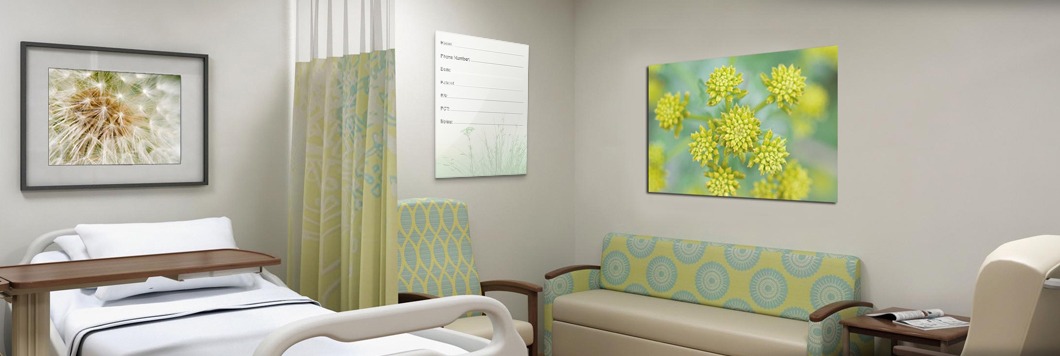Whiteboards and glass dry erase boards are becoming increasingly more common in healthcare facilities. They allow patients and staff to communicate quickly and easily and encourage the sharing of important information among medical professionals. New types of custom dry erase boards are being offered to healthcare facilities. You can design these dry erase boards to have many functions including customized patient information, hospital branding, and beautiful artwork. Many facilities are realizing the benefits of doing so. These whiteboards go beyond the large, non-sustainable, ghosting, and bacteria-harboring boards of the past. If you’re considering designing whiteboards for your facility’s patient rooms, there are a few things you should keep in mind to keep from making these three common mistakes.
1) Not Planning Ahead for Potential Changes
When you design the boards that will hang inpatient rooms, you’ll probably include space for things like the room information and patient care notes. Be sure, however, to plan ahead for potential changes that your facility will go through in the future. For instance, if you eventually want to have space for patients to display cards or thoughtful notes from family members, you’ll need to plan accordingly in the board design process. If you’re planning on designing boards to have only enough space for the absolutely essential information with little room for anything else that may come up, you may regret this decision in the future. Design a dry erase board that offers enough room for writing down anything you might want to share between patients and staff, as well as among staff members.
2) Choosing a Material/Surface that is Not Durable or Is Prone to Staining
If you’re keeping to a budget, but also need a lot of whiteboards, you may be tempted to purchase traditional whiteboards that are a little less expensive in the interest of saving some money. Unfortunately, with lower quality materials and surfaces, you run the risk of the marker staining the board or “ghosting”—leaving behind slightly visible remnants of older messages. This can be not only unsightly but also dangerous if the information is misread. Consider your custom whiteboards as an important investment. Spend a little extra on glass dry erase boards now, and you’ll reap the benefits for many years to come. Glass dry erase boards are designed to last up to 50 years, so your investment now will more than pay for itself.
3) Choosing a Material That Isn’t Bacteria-Resistant
When installing dry erase boards in health care facilities, disease prevention and cleanliness are key. Choosing whiteboards that are made of materials that are hard to clean, have frames where bacteria can get caught, or are porous could lead to having less than ideal sanitary conditions. In order to maintain a high level of sanitation within each patient room, low-maintenance, bacteria-resistant, frameless dry erase boards are preferable. Don’t skimp when it comes to patients’ health—choose a glass dry erase board that is stress-free and easy to clean.
When you implement dry erase boards in inpatient rooms, you’ll notice a significant improvement in communication. Just make sure you think ahead for things you might want from the boards in the future, plan for durability, and make sure they are satisfactory for patients.

